How Customer Retention Differs in B2B and B2C Relationships
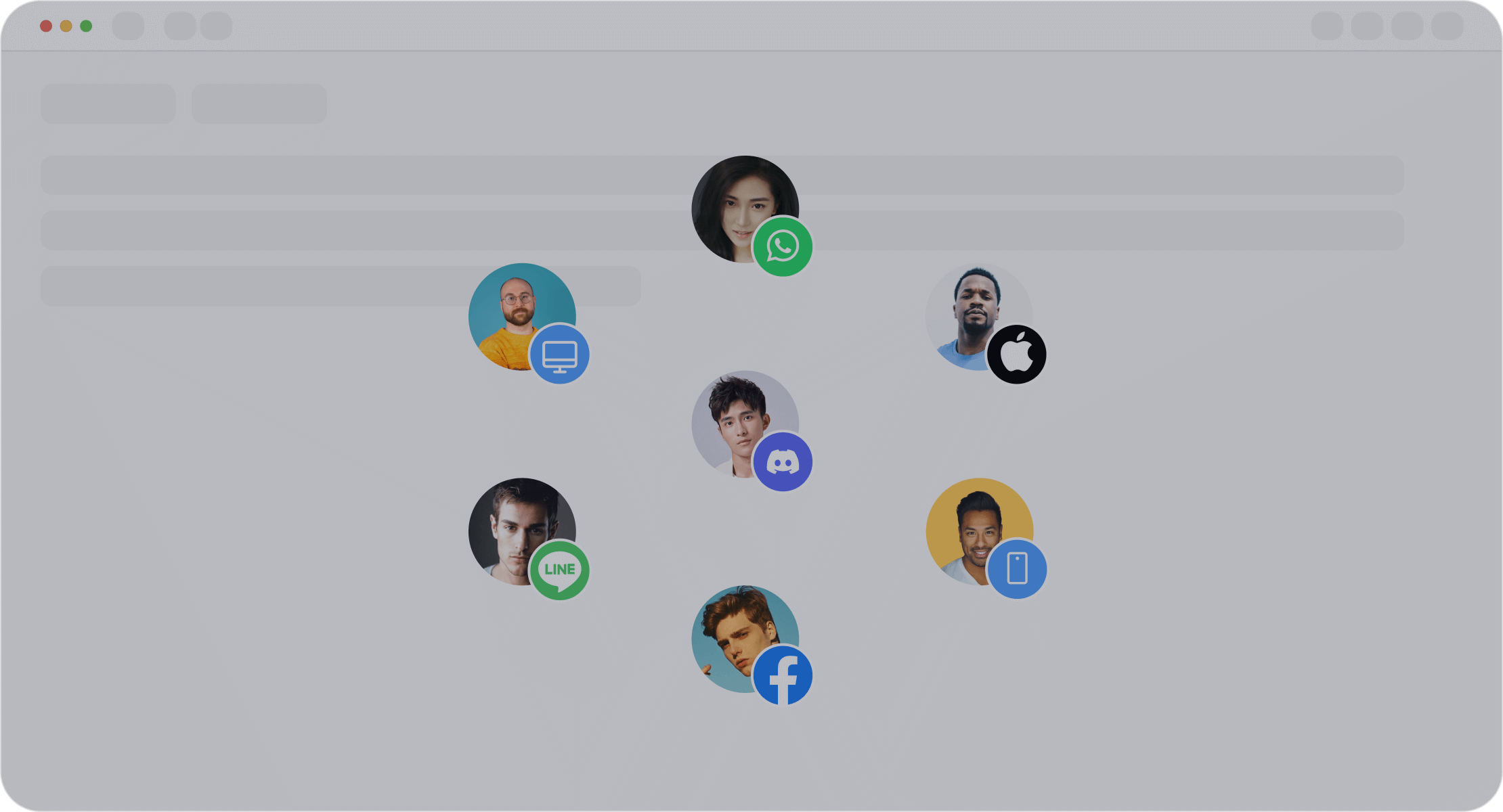
B2B customer retention differs significantly from B2C retention in several key ways. In B2B, you manage complex, long-term relationships involving multiple decision-makers and extended sales cycles. In contrast, B2C focuses on quick decisions and emotional connections. Strong B2B customer retention is essential for driving business growth and operational efficiency. For instance, B2B retention rates can reach as high as 90%, while 78% of customers expect personalized experiences. Sobot supports your efforts to engage both B2B and B2C customers through seamless omnichannel support. By tailoring your retention strategies with Sobot, you can transform your business outcomes and foster lasting customer loyalty.
B2B and B2C Customer Retention Overview
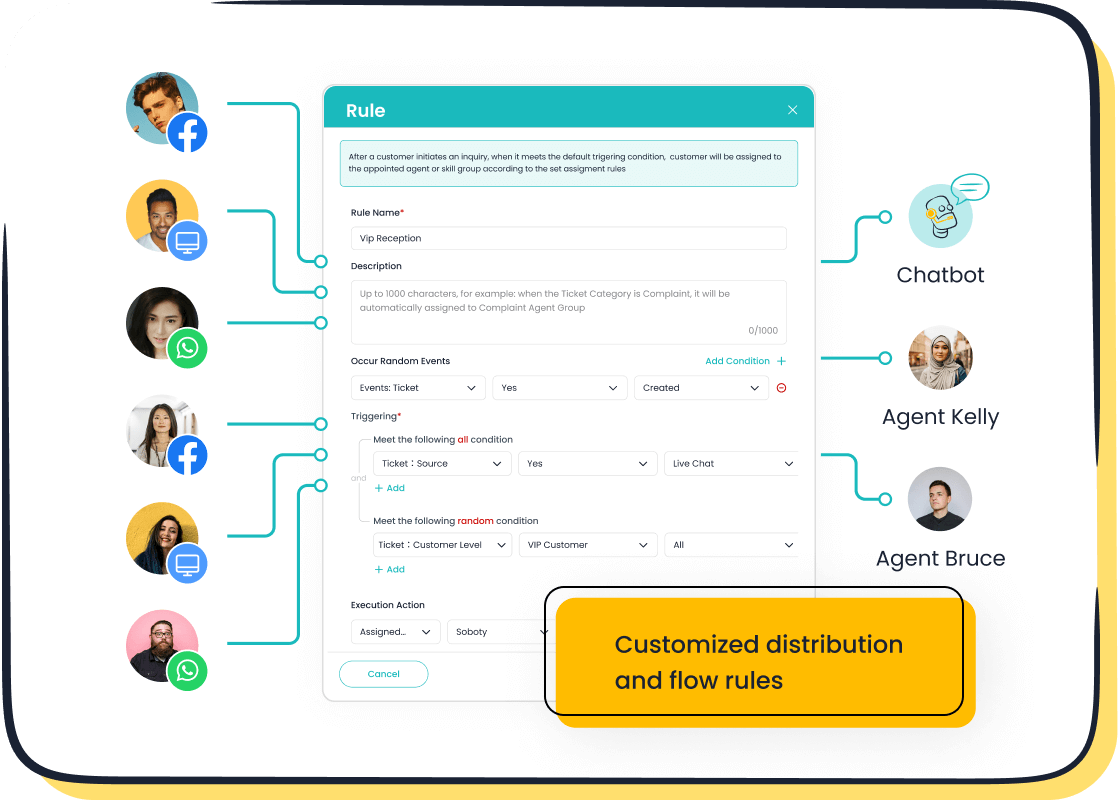
B2B Customer Retention Defined
You may know b2b customer retention as the process of keeping business clients loyal to your company over time. In business-to-business relationships, you often work with professionals or decision-makers who expect trust, ongoing support, and value delivery. These clients usually buy complex products or services that need customization and integration. The sales cycle in b2b can last months and involves many people from both sides. You need to build long-term partnerships and manage several stakeholders. Metrics like customer retention rate, churn rate, and Net Promoter Score (NPS) help you measure success. Companies like OPPO have improved their b2b customer retention by using Sobot’s unified contact center solutions, which streamline communication and support across all channels.
B2C Customer Retention Defined
B2c customer retention focuses on keeping individual consumers coming back to your brand. In business-to-consumer settings, you deal with a broad audience who often make quick decisions based on emotions, trends, or convenience. Products are usually simple and ready to use. You need to create positive experiences at every touchpoint, from online chat to social media. Key strategies include loyalty programs, personalized offers, and fast support. You can use tools like Sobot Live Chat to engage customers instantly and gather feedback through satisfaction surveys. Tracking metrics such as repeat purchase rate and customer lifetime value helps you understand how well you retain your b2c customers.
Key Differences
Here’s a table to help you see the main differences between b2b and b2c customer retention:
| Dimension | B2B Customer Retention Context | B2C Customer Retention Context |
|---|---|---|
| Target Audience | Companies, decision-makers, focus on trust and support | Individual consumers, focus on needs and emotions |
| Product Complexity | Complex, customized, integrated | Simple, off-the-shelf |
| Sales Cycle | Long, involves many people, months or more | Short, quick, based on price or trends |
| Relationship Nature | Long-term, partnership, multiple stakeholders | Short-term, emotional, satisfaction-driven |
Business-to-business retention relies on building strong, value-driven relationships and managing complex needs. Business-to-consumer retention centers on emotional engagement and quick, satisfying experiences. Sobot supports both models by offering omnichannel solutions that unify your customer interactions, making it easier to deliver consistent service whether you serve businesses or consumers.
Customer Journey and Decision-Making
B2B Journey
You will notice that the b2b customer journey often takes much longer and involves more steps than in b2c. In b2b, you work with teams of decision-makers who each have their own needs and concerns. The journey can last months, sometimes even close to a year, depending on the industry. For example, in manufacturing, the average b2b buyer journey lasts 235 days, while in SaaS it is about 84 days. The table below shows how journey length and complexity change by industry:
| Industry | Average B2B Buyer Journey Duration (days) | Key Complexity Factors |
|---|---|---|
| Overall Average | 192 | Multiple stakeholders, regulatory requirements, internal processes, stop-and-go nature |
| SaaS | 84 | Free trials, demos, self-service onboarding compress early decision-making |
| Manufacturing | 235 | Custom specs, safety compliance, supply chain constraints |
| Aerospace and Defense | 284 | Intense vetting, government compliance, multi-phase bidding |
| Professional Services | 157 | Emotional and operational considerations, trust and referrals |
| Legal Tech | 221 | Procurement hurdles, data privacy, risk aversion |
| Education Technology | 194 | Seasonal budgets, academic timelines |
| Marketing Technology (MarTech) | 128 | Multiple integrations, stakeholder input |
| Supply Chain and Logistics Tech | 213 | Integration complexity, real-time operational demands |
| Energy and Utilities | 249 | Legacy systems, regulatory approvals, pilot projects |
| B2B eCommerce | 142 | Tech evaluations, migration planning, revenue impact modeling |
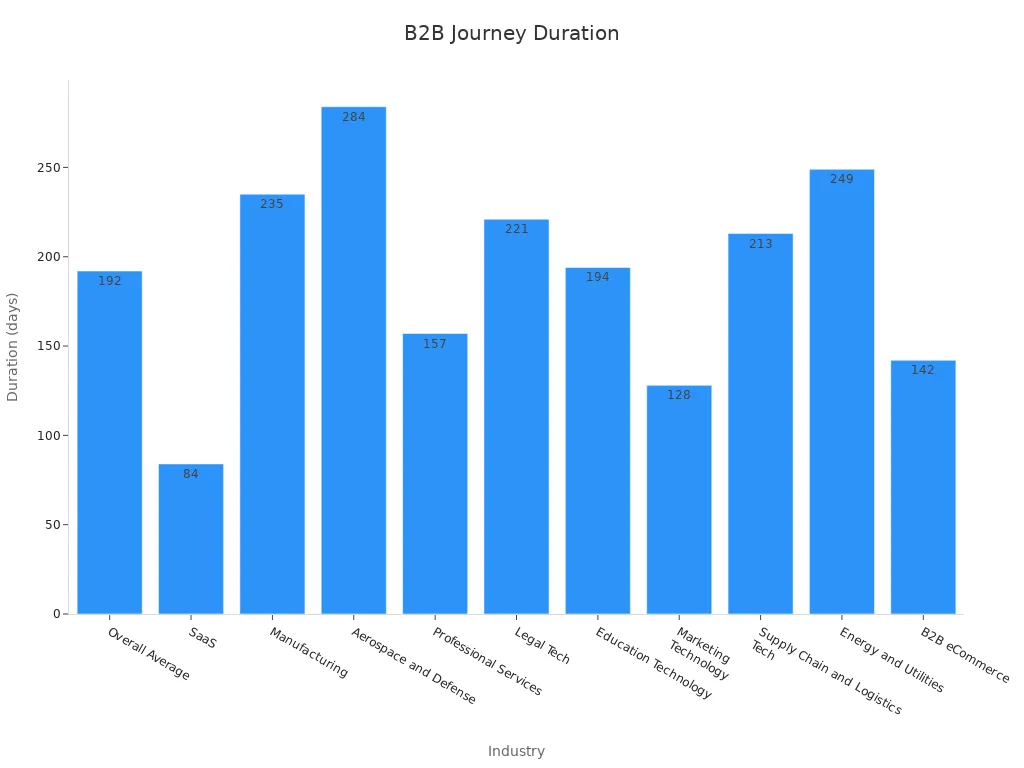
The b2b journey usually follows these stages:
- Awareness: You recognize a problem and start looking for solutions.
- Consideration: You compare options, ask for demos, and check references.
- Conversion: Your team makes a decision and completes the purchase.
- Loyalty: You receive onboarding and support, building trust over time.
- Advocacy: You recommend the brand to others if you are satisfied.
Most b2b buyers complete 67% of their journey online, doing research before talking to sales. You may spend only 17% of your time meeting suppliers, and just 5-6% with sales reps. The journey often involves 6-10 people, each gathering their own information. This makes the process complex and slow, but it also builds strong relationships.
B2C Journey
The b2c customer journey moves much faster. You often make decisions alone or with family, and you rely on emotions, trends, or convenience. The journey can take minutes or days, not months. You might see an ad, visit a website, read reviews, and buy the product all in one day. The b2c customer journey usually includes these steps:
- Awareness: You see a product or service that catches your attention.
- Shopping/Consideration: You compare products, read reviews, and maybe ask friends.
- Purchase: You decide and buy, often with just a few clicks.
- Post-Purchase: You receive follow-up messages, surveys, or loyalty offers.
You interact with brands at many touchpoints, such as social media, websites, and live chat. Companies use data from your browsing and purchase history to personalize your experience. Real-time analytics and feedback help brands understand your needs and adapt quickly. For example, Sobot Live Chat lets you get instant answers, making your journey smoother and faster. Brands also use Voice of the Customer programs to track b2c customer expectations and improve service.
Tip: Brands that map your journey and personalize each step can increase your satisfaction and speed up your decisions.
Impact on Retention
The length and structure of the customer journey have a big effect on retention. In b2b, a longer journey with many touchpoints helps build trust and loyalty. Each stage, from onboarding to ongoing support, adds value and keeps you engaged. Research shows that 63% of customers see onboarding as key to staying loyal. Loyalty programs and regular follow-ups also encourage you to return.
In b2c, quick and positive experiences matter most. If you get fast support and personalized offers, you are more likely to come back. Brands that meet b2c customer expectations at every touchpoint see higher retention rates. For example, 57% of customers spend more with brands that offer loyalty programs. Sobot Live Chat helps both b2b and b2c companies by providing instant, omnichannel support. This keeps your experience smooth, no matter how complex the journey or the nature of transactions.
Note: A well-managed journey, with proactive support and personalization, leads to higher retention and better customer experience for both b2b and b2c.
Relationship Length and Stability
B2B Retention Duration
You often see B2B relationships last for many years. These partnerships grow stronger with time because both sides invest in trust and value. Many companies use long-term contracts to keep clients close. This approach helps you build stable revenue and reduce the cost of finding new customers. Here are some important facts about B2B retention:
- Customer retention drives steady revenue and helps you form stronger relationships.
- Building trust and offering ongoing support are key parts of B2B retention strategies.
- Long-term partnerships can last several years or even decades, depending on the industry.
- Increasing partner retention by just 5% can boost profits by 25% to 95%.
- Keeping clients is often five times less expensive than finding new ones.
You can use tools like Sobot’s unified contact center to support these long-term partnerships. Sobot helps you keep communication clear and consistent, which is important for lasting business success.
B2C Retention Duration
B2C retention usually looks different. You see shorter relationships, but they can still be strong if you focus on customer experience. Many consumers make quick decisions and may switch brands if they find a better deal or faster service. However, loyalty programs and personalized offers can help you keep customers coming back. Brands that use instant support, like Sobot Live Chat, make it easy for you to get help and answers right away. This quick service can turn a one-time buyer into a repeat customer.
Service Implications
Service quality shapes how long customers stay with your brand. In the OPPO case, the company improved its customer retention by using Sobot’s chatbot and ticketing system. OPPO handled more questions quickly and gave better answers, which made customers happier. Studies show that good service boosts brand image and product quality in the eyes of your customers. When you use tools that make service faster and more accurate, you help build loyalty and encourage repeat purchases. Sobot’s solutions let you manage all your customer interactions in one place, making it easier to deliver great service every time.
Retention Strategies and Tactics
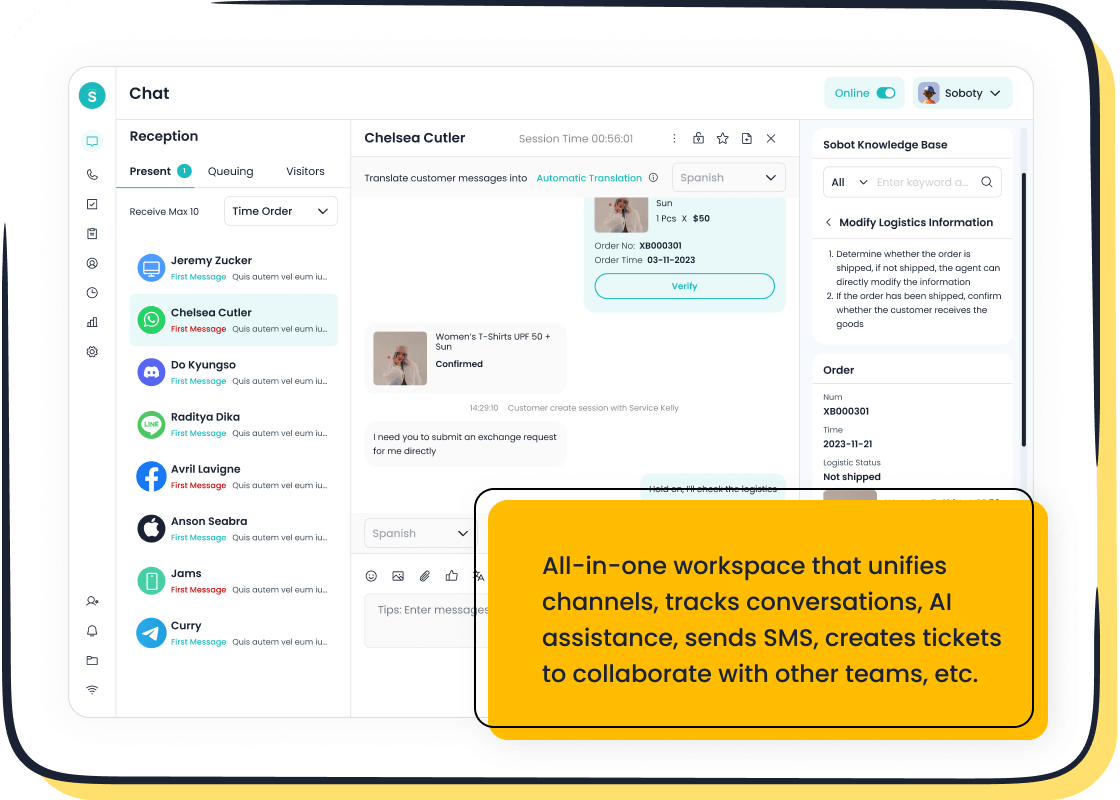
B2B Approaches
You need a strong plan to keep your business clients loyal. In b2b customer retention, you focus on building trust and showing value over time. You can use b2b loyalty programs to reward clients for staying with you. These programs might include special training, VIP events, or exclusive access to new features. You should measure success with metrics like Customer Lifetime Value (CLV), Net Promoter Score (NPS), and engagement rates. Regular business reviews and personalized communication help you understand what your clients need. You can use predictive analytics to spot clients who might leave and reach out before they do. Companies like Rackspace and Wistia use dedicated support teams and custom success tracking to boost loyalty. You can also use automation tools to send reminders, share updates, and collect feedback. When you celebrate client milestones and offer flexible pricing, you make your clients feel valued. B2b loyalty programs work best when you combine rewards, personal support, and clear reporting on results.
Tip: A 5% increase in b2b customer retention can lead to over 25% profit growth. Retaining clients is five times less expensive than finding new ones.
B2C Approaches
You can keep individual customers coming back by making every experience personal and rewarding. B2c loyalty programs play a big role here. You might offer points for purchases, birthday discounts, or early access to sales. These rewards make customers feel special and encourage repeat visits. You should use data to send personalized offers based on what each customer likes. For example, Every Man Jack used AI to predict when customers would need to reorder, which led to a 12.4% boost in revenue. Ministry of Supply increased revenue by 47.3% by sending emails based on gender preferences. You can track your progress with metrics like retention rate, churn rate, and customer satisfaction scores. When you use b2c customer loyalty strategy, you focus on fast support, easy returns, and fun rewards. B2c loyalty programs help you build brand loyalty and turn shoppers into fans. Remember, 61% of customers will spend more with brands that offer personalized experiences.
| Metric | What It Measures | How It Shows Loyalty Impact |
|---|---|---|
| Customer Retention Rate | Percentage of customers who stay | High rate means strong customer loyalty |
| Churn Rate | Percentage of customers who leave | Low rate means loyalty programs work |
| Net Promoter Score | Willingness to recommend your brand | High score shows loyalty and advocacy |
| Average Order Value | Average spending per order | Higher value means loyalty and trust |
| Customer Satisfaction | How happy customers are with your service | High scores mean loyalty programs succeed |
Note: Personalization and b2c loyalty programs can double conversion rates and quadruple demo requests. You can read more about these results in industry reports.
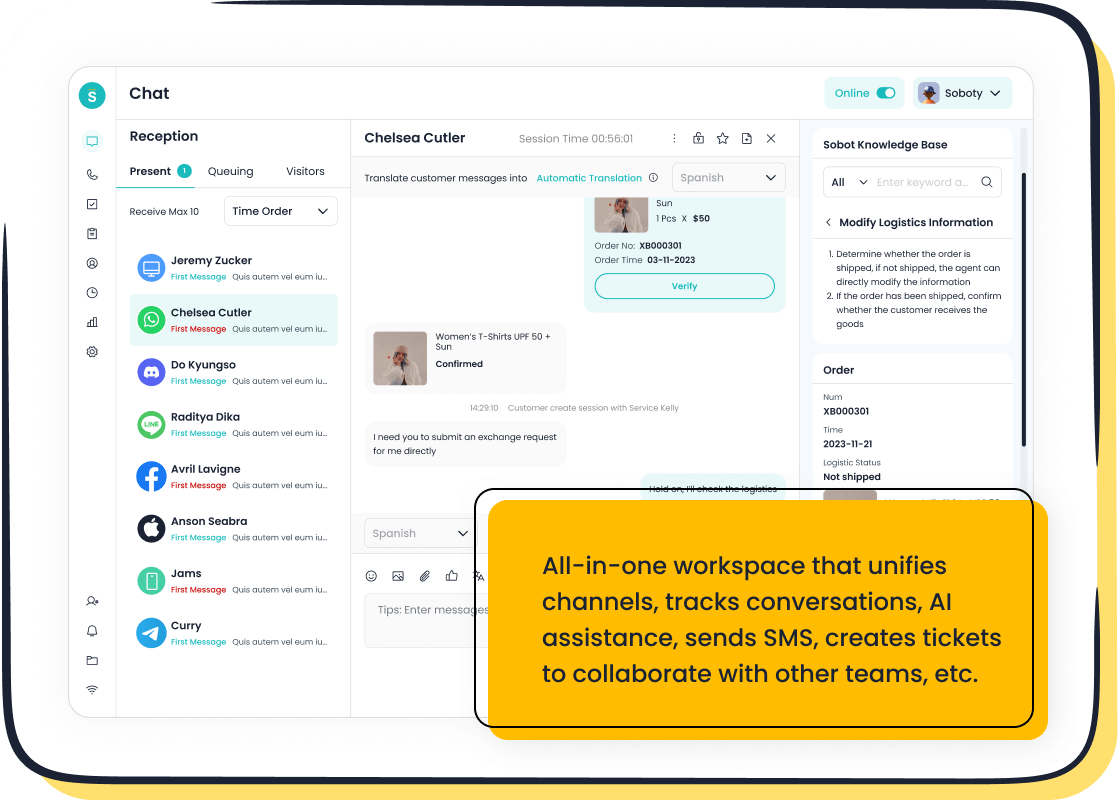
Sobot Live Chat Solutions
You can use Sobot Live Chat to boost customer loyalty for both b2b and b2c clients. Sobot brings all your conversations into one place, so you never miss a message. You can reach customers on their favorite channels, like WhatsApp, Facebook, or your website. Sobot helps you segment customers by value or intent, so you can send the right message at the right time. AI-powered tools let you automate follow-ups, send personalized offers, and gather feedback with satisfaction surveys. You can track over 150 service indicators to see what works best. Sobot’s omnichannel support makes it easy to run b2b loyalty programs and b2c loyalty programs side by side. You can reward loyal clients, offer special deals, and keep every interaction smooth. With Sobot, you build customer loyalty, increase retention, and grow your brand loyalty every day.
Sobot’s clients, like OPPO, have seen a 57% increase in repurchase rates and a 94% positive feedback rate by using these tools. You can learn more about Sobot’s solutions at Sobot Live Chat.
Communication and Customer Contact
B2B Communication
You often see b2b communication focus on building trust and long-term partnerships. In b2b, you use a formal tone and technical language. You talk to decision-makers who expect detailed information and clear value. High-touch, consultative conversations help you meet client expectations and address complex needs. You might use email, LinkedIn, or in-depth meetings to share educational content and updates. These methods support b2b loyalty programs by making each client feel valued. You build customer loyalty by offering personalized advice and support. This approach helps you form strong relationships and reduces churn. A consultative mindset in your team can turn every interaction into a chance to strengthen loyalty and deliver on expectations.
| Aspect | B2B Communication Style | B2C Communication Style |
|---|---|---|
| Tone | Formal, professional | Casual, conversational |
| Language | Technical, industry-specific jargon | Simple, accessible |
| Focus | Educating, informing, building trust | Emotional appeal, creating quick connections |
| Content Type | Educational content, technical details | Visual content, storytelling |
| Relationship Approach | Long-term, personalized, trust-building | More transactional, loyalty-driven |
| Target Audience | Business decision-makers | Individual consumers |
B2C Communication
You notice that b2c communication uses a casual tone and simple language. Brands reach you through social media, SMS, and live chat. These channels help companies respond quickly and build customer loyalty. You often see visual content and stories that create emotional connections. Brands use targeted communications to send you offers and updates based on your interests. Fast replies and easy access to support help meet your expectations. Loyalty programs in b2c reward you for repeat purchases and keep you engaged. Companies track metrics like open rates, click-through rates, and customer retention to improve their approach. This scalable method helps brands grow customer loyalty and meet the needs of many customers at once.
Omnichannel Support
You benefit when brands use omnichannel support. Sobot’s platform lets you connect with companies on WhatsApp, Facebook, Instagram, and more. This seamless experience builds customer loyalty by making every interaction easy and consistent. Companies that use omnichannel tools see higher customer loyalty and retention rates—up to 89% compared to 33% for those without strong strategies. Sobot’s integration with multiple channels helps you get quick answers and personalized service. High scores in customer satisfaction and first contact resolution show the value of this approach. Omnichannel support meets your expectations and supports both b2b loyalty programs and b2c loyalty programs, helping brands deliver targeted communications and build lasting loyalty.
Measuring Customer Retention
B2B Metrics
You need to track the right metrics to measure customer loyalty in B2B relationships. These metrics help you see how well your business keeps clients and builds loyalty over time. Here is a table with some of the most important B2B retention metrics:
| KPI Name | Description | Why It Matters for Loyalty |
|---|---|---|
| Customer Retention Rate | Percentage of clients you keep over a period | Shows loyalty and long-term relationships |
| Customer Lifetime Value | Total revenue from a client during your partnership | Predicts future loyalty and revenue |
| Net Promoter Score (NPS) | How likely clients are to recommend your business | Reflects satisfaction and loyalty |
| Renewal Rate | Percentage of contracts renewed by clients | Measures ongoing loyalty and trust |
| Customer Satisfaction Score (CSAT) | Direct feedback on client satisfaction | Helps improve loyalty and service |
You should set clear goals for each metric and check your progress often. Sobot’s built-in analytics and satisfaction surveys make it easy to track these numbers and spot trends in customer loyalty.
B2C Metrics
In B2C, you measure customer loyalty with different metrics. These numbers show how well you keep shoppers coming back and how satisfied they feel. Here are some key B2C retention metrics:
| Metric | Description | Importance for Customer Loyalty |
|---|---|---|
| Retention Rate | Percentage of customers who return | Shows loyalty and satisfaction |
| Repeat Purchase Rate | How often customers buy again | Measures ongoing loyalty |
| Churn Rate | Percentage of customers who leave | Lower churn means higher loyalty |
| Customer Lifetime Value | Total revenue from a customer over time | Predicts loyalty and long-term value |
| Customer Satisfaction Score (CSAT) | Direct feedback from customers | Helps improve loyalty and experience |
Companies like Netflix use these metrics to boost customer loyalty and satisfaction. You can compare your numbers to industry benchmarks to see how your loyalty strategies perform.
Feedback and Analytics
You can improve customer loyalty by listening to feedback and using analytics. Collect feedback through surveys, live chat, and calls. Group feedback into themes to find what matters most for loyalty and satisfaction. Use Sobot’s analytics to track over 150 indicators, including satisfaction scores and first contact resolution. Real-time feedback tools help you fix problems fast and keep customer loyalty strong. When you act on feedback, you show customers you care about their satisfaction and loyalty. This approach builds trust and keeps customers coming back.
Tip: Companies that use feedback and analytics see higher customer loyalty and satisfaction. Sobot’s platform helps you turn insights into action for better retention.
You see that B2B and B2C customer retention require different approaches. B2B needs long-term trust and partnership, while B2C focuses on quick, personal experiences. Using Sobot Live Chat helps you connect with customers on every channel. To boost retention, you can:
- Map your customer journey and personalize each step.
- Train your team to deliver fast, consistent service.
- Use real-time data to spot and fix problems quickly.
Omnichannel tools increase satisfaction by up to 30% and help you build loyalty that lasts.
FAQ
What is the main difference between B2B and B2C customer retention?
You see longer relationships in B2B customer retention because companies sign contracts and build trust. In B2C, customer retention focuses on quick, emotional connections. B2B uses loyalty programs and personalized support, while B2C relies on fast service and rewards. Both benefit from omnichannel strategies.
How do loyalty programs impact customer retention in B2C and B2B?
Loyalty programs increase customer retention by rewarding repeat business. In B2C, you might earn points or discounts. In B2B, you get exclusive training or early access to features. Studies show loyalty programs can double retention rates for both models. Sobot helps you manage these programs across channels.
Why is omnichannel support important for customer retention?
Omnichannel support lets you reach customers on their favorite platforms, like WhatsApp or Facebook. This approach boosts customer retention by providing seamless service. Companies using omnichannel strategies see up to 89% higher retention rates. Sobot’s platform makes it easy to deliver consistent support everywhere.
How can Sobot help improve customer retention for my business?
Sobot offers tools like Live Chat, ticketing, and analytics to help you track customer retention. You can run loyalty programs, automate follow-ups, and provide omnichannel support. For example, OPPO increased its repurchase rate by 57% using Sobot’s solutions. Learn more at Sobot Live Chat.
See Also
Expert Strategies For Live Chat Success In Retail
Enhancing Retail Customer Service Through Live Chat
Comparing The Best Voice Of Customer Software Tools
